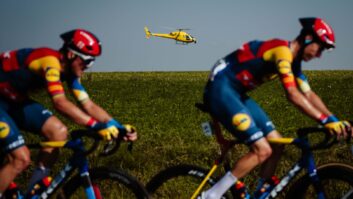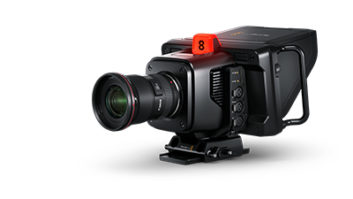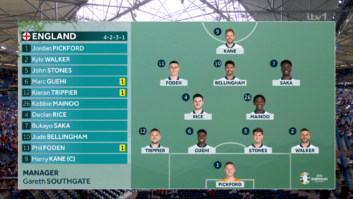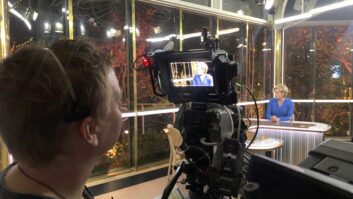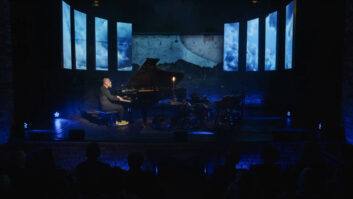 In the ambiance of a former brewery near Munich, German pianist Martin Kälberer performed live, with audiences enjoying the concert in immersive audio. Viewers at home could experience the unique atmosphere of the location via livestream on YouTube and Instagram.
In the ambiance of a former brewery near Munich, German pianist Martin Kälberer performed live, with audiences enjoying the concert in immersive audio. Viewers at home could experience the unique atmosphere of the location via livestream on YouTube and Instagram.
How can artists and creatives share special moments with their fans at exclusive, in-person live events while still reaching broader audiences online? And how can the unique atmosphere of such an intimate session be transported to the internet and on social media so that viewers feel the magic even on the smallest screen? Video journalist and social media expert Michael Praetorius asked himself these questions over and over again.
“When I set up my compact OB van with Blackmagic workflow, I was looking for ways to support creatives with my technology,” Michael recalls. One day, music manager and artist advisor Bela Rieger, with whom Michael had discussed some ideas at various occasions, called him and asked if he could manage the live streaming on Instagram and YouTube for an immersive audio concert with pianist Martin Kälberer, as well as the video recording for a later Blu-ray production in Dolby Atmos.
Conveying the atmosphere
The event would occur in front of just 80 spectators at the brewery-turned-modern recording studio near the Ammersee lake in Bavaria. For the viewers at home, the location’s unique atmosphere was to be captured in high-quality 4K video with professional sound in two formats: In portrait format for the Instagram livestream and landscape format for YouTube. The Instagram component was an RTMP stream via the new Instagram Live Producer feature.
While the audience on site was provided with an immersive sound experience, thanks to 45 speakers and various microphones, the live stream audio output was mixed in stereo format: A sound engineer on site provided the live mix. The signal generated by the audio mixer was then embedded back into the camera feed over SDI without delay.
For the video workflow, Michael Praetorius and the team around artist Michael Kälberer used a total of nine cameras, including gimbals and a ceiling camera, which captured every angle of the stage, including a URSA Broadcast G2 and – for the first time at a live production in Europe – the new Blackmagic Studio Camera 6K Pro.
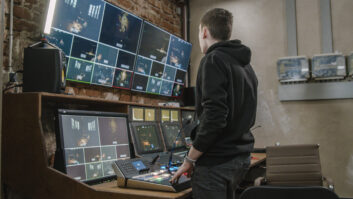 The temporary gallery relied on an ATEM 4M/E Broadcast Studio 4K to mix the main program on-site. At the same time, the OB truck, equipped with an ATEM Constellation 8K, which also served as a hub for the entire production, delivered the live vertical mix in 4K for social media.
The temporary gallery relied on an ATEM 4M/E Broadcast Studio 4K to mix the main program on-site. At the same time, the OB truck, equipped with an ATEM Constellation 8K, which also served as a hub for the entire production, delivered the live vertical mix in 4K for social media.
“The special thing about the production was that there were two completely independent video editing workflows and two independent streams,” said Michael. While he himself supervised the 4K stream to YouTube in landscape format from the gallery, his colleague Fabian Mannberger vision mixed the vertical format for Instagram. “This was the first time we had a native vertical workflow.”
Cinematic look and seamless editing workflows
Although the location was already fully equipped with Blackmagic acquisition hardware, including the Pocket Cinema Camera 6K Pro, Michael decided to test out the new Blackmagic Studio Camera 6K Pro for the production.
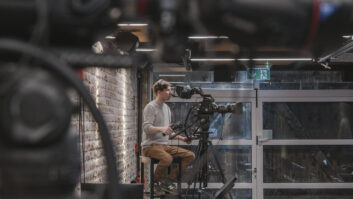 “We wanted to give the images a cinematic look and knew that Blackmagic’s new studio camera had the same 6K sensor as the URSA Broadcast G2. However, with the Studio Camera 6K Pro we were able to switch to a holistic 4K workflow for both our two-format live streaming and in preparing for post-production of the Blu-ray recording.”
“We wanted to give the images a cinematic look and knew that Blackmagic’s new studio camera had the same 6K sensor as the URSA Broadcast G2. However, with the Studio Camera 6K Pro we were able to switch to a holistic 4K workflow for both our two-format live streaming and in preparing for post-production of the Blu-ray recording.”
He added that with the Cinema Pocket 6K and the URSA cameras alone, they would have only achieved a complete 4K video in post-production. “The Studio cameras were a sensible upgrade and perfect complement to the URSA cameras. And the best thing was that we could use lenses we already had due to the EF mount,” Michael confirms.
Instagram Live Producer
Another notable showcase was the RTMP stream via the Instagram Live Producer, currently only available to a small group of beta testers. “You can create wonderful images with it, but not every social media platform supports RTMP,” Michael explains.
Until recently, this was not possible by default on Instagram either. “There are various RTMP apps on the market, but they are not officially approved. Anyone who uses them risks having their account banned, so this is a welcomed addition for all artists.”
The 4K stream to Instagram was particularly challenging. “We wanted to monitor the stream to ensure perfect camera framing. Although the final results look great, adhering to the 9.16 format meant we had to figure out how to monitor the live video feeds.” Michael added that they used the ATEM’s downstream key with darkened masks alongside the V-mark and H-mark on the video monitors (both of the cameras and in the live editing room). “In the end, we also added some smartphones to the monitoring mix.”
Overall, Michael was satisfied with the chosen video and audio set-up: “I would do very little if anything differently next time for similar multi-stream productions,” he concludes.

